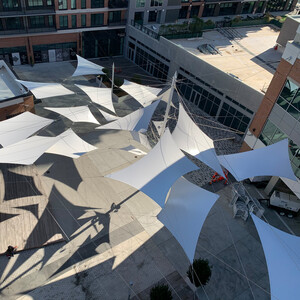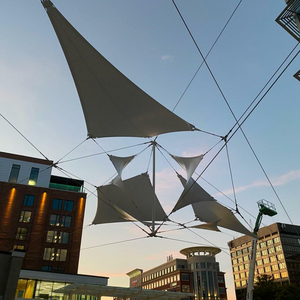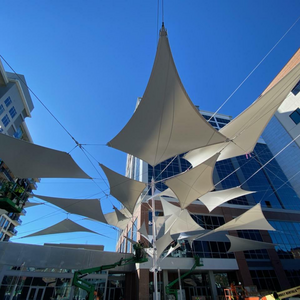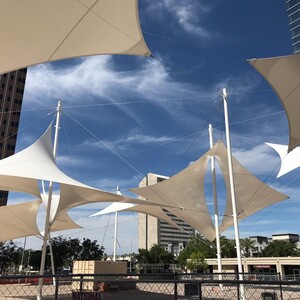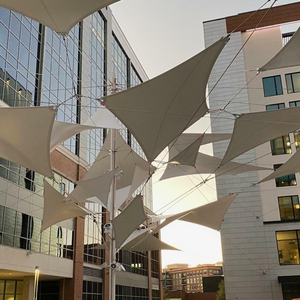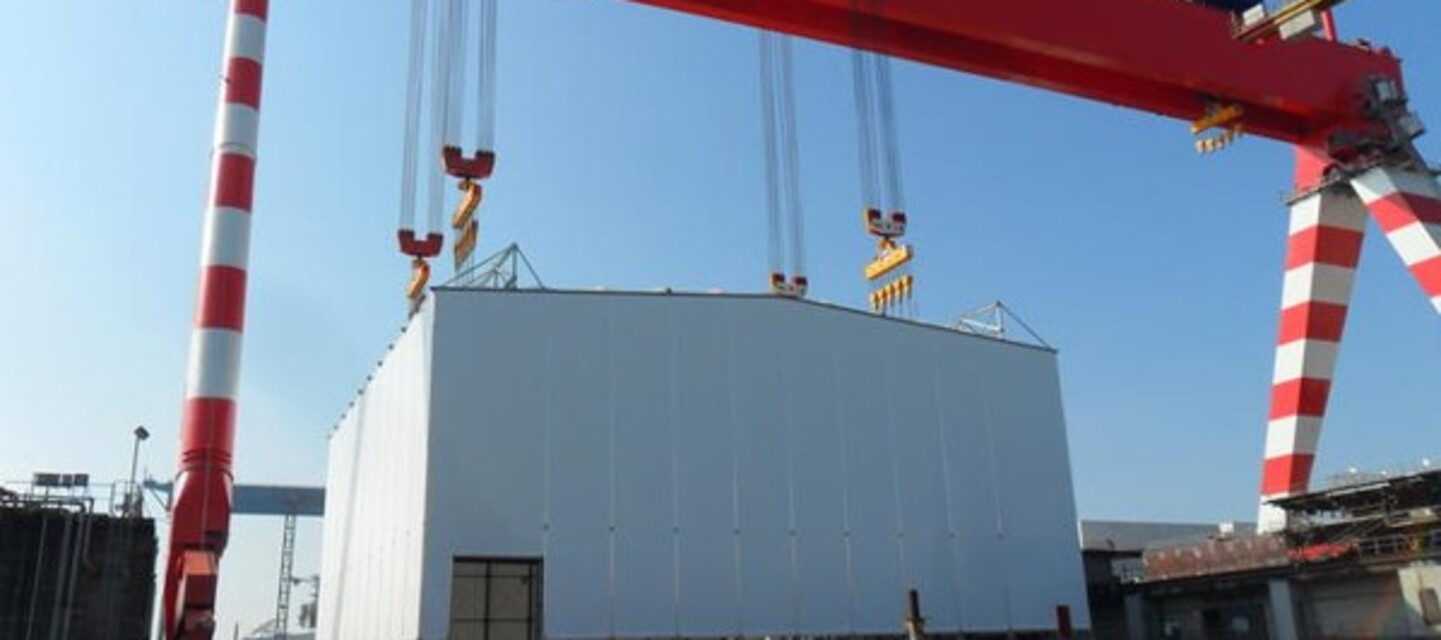
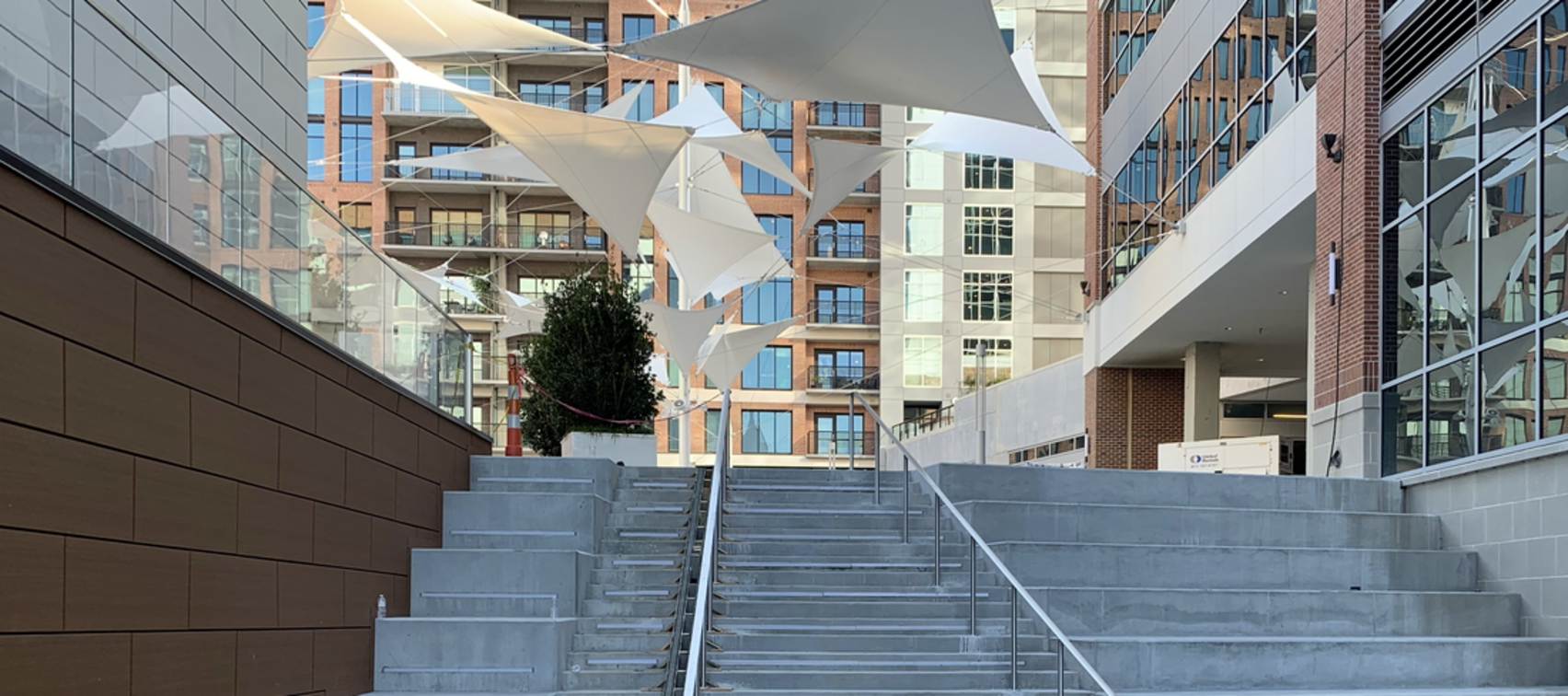
Reducing heat island effects with kite sails at Camperdown Plaza
combatting heat island effects with permanent solar shades
- Phoenix, United States
- Fluo²max Type III - T3117T
update Congratulations to Guildworks for your Excellence Award 2022 with this project: https://iaa.textiles.org/awards/city-square-plaza/
Our Fluo2max membrane is making an fairy appearance in Phoenix Arizona.
the designed hypar structures are litterally flying in the air thanks to the judicious design made by Guildworks.
8 masts with cables extending to surrounding buildings are anchoring the multiple hypars and the 3 dual teardrops cones which are covering the plaza.
This permanent structure is both elegant and functional, providing shade under high solar radiations of Arizona's weather.
Combatting heat island effects
Heat islands are urbanized areas that experience higher temperatures than outlying areas. Structures such as buildings, roads, and other infrastructure absorb and re-emit the sun’s heat more than natural landscapes such as forests and water bodies. In urban areas, built environment is densely concentrated and greenery is limited, become “islands” of higher temperatures relative to outlying areas.
Daytime temperatures in urban areas are about 1–7°F (up to 4°C) higher than temperatures in outlying areas and night time temperatures are about 2-5°F (up to 3°C) higher.
Heat islands can contribute to a range of environmental, energy, economic, and human health impacts.
Permanent solar protection around built environment to mitigate the heat island effects
Some solutions can help to fight against the heat island effects like:
- Give space to trees and vegetation in the built environment,
- Develop shading structure ecosystem with lightweight and durable fabrics like in this project,
- Install green roofs and facades, creating natural heat buffer zones,
- Paint in light colours. Lighter colours reflect the solar energy, reducing the material energy absorption.
Volgende



